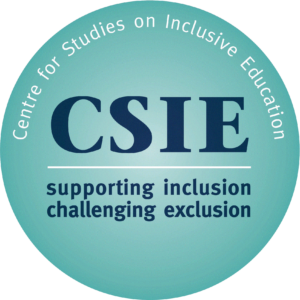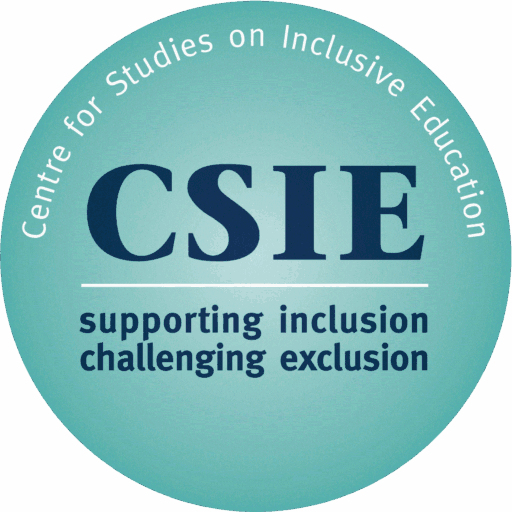May 18, 2012
Much later than originally expected, and almost a year after the consultation on the Green Paper closed, on 15 May the Department for Education published Support and aspiration: A new approach to special educational needs and disability – progress and next steps, setting out the progress made and the next steps in taking forward the Green Paper reforms.
We looked for the Department’s current position on inclusion, but at first glance saw nothing. The word “inclusion” is only mentioned four times in the whole document: twice as part of naming the National Development Team for Inclusion, once in naming the Inclusion Development Programme materials and once to report that social inclusion had been mentioned in consultation responses. Yes, that’s it. Inclusion doesn’t seem to have a place in the government’s plans for reform. What is worse, a strong flavour of the medical model of disability runs through the whole document.
We were surprised to find no reference to the Department’s previous commitment to “removing the bias towards inclusion” and took a closer look at the document offering details of all consultation responses. We read that many respondents said there was no bias towards inclusion. Interestingly, this is the only place where we found no clear information on how many respondents expressed this view. We are left wondering if our unofficial information was correct, that the overwhelming majority of responses said there was no bias towards inclusion. We are pleased to see the offensive phrase gone, but remain concerned that the “Progress and next steps” document reflects a bias towards segregation which remains unsaid.
There is no mention of schools’ statutory duties under the Equality Act 2010 and no mention of the government’s commitment, with reference to Article 24 of the UN Convention on the Rights of Persons with Disabilities, to “continuing to develop an inclusive system where parents of disabled children have increasing access to mainstream schools and staff, which have the capacity to meet the needs of disabled children.” We know that the current way of organising education, and the existence of separate special schools, have their roots at a time in history when disabled people were not thought of as part of mainstream society. Over the years society has changed, but education hasn’t. At least not in this respect. Many disabled children and young people continue to be excluded from their local school, in the name of their own good. Well-meaning non-disabled adults continue to assume that there is no need for mainstream schools to change.
We are also alarmed at the speed with which changes are taking place. The government has announced new legislation, the Children and Families Bill, to make the legal changes required for the proposed Green Paper reforms. Draft clauses for the SEN & disability section of the Children and Families Bill are expected to be published in July 2012 and the Bill is expected to be introduced into the House of Commons in January 2013. The government, however, seems to be jumping the gun. With some pathfinders not due to report until later in 2013 or 2014, we struggle to understand what evidence there is to suggest that the proposed changes will deliver better outcomes.
The “Progress and next steps” document is organised around five main areas, as outlined below.
1 Early identification and assessment
The government proposes to replace learning difficulties assessments and statements of special educational need with a single Education, Health and Care Plan (EHCP). We applaud the proposed collaboration between government Departments (is it too optimistic to think it might work this time?) and the wider age span of 0-25 years, but wonder how the government will ensure that single plans have a strong focus on broader life outcomes. We worry that they might have a narrow focus on academic achievement, or perceived readiness for it. We are reminded of the words of Mel Ainscow who, in his 2005 article “Understanding the development of inclusive education system”, says: “In other words, we must ‘measure what we value’ rather than, as is often the case, ‘valuing what we can measure’.”
2 Giving parents control
In this section the government promises parents a right to state a preference of school, proposes a personal budget and introduces the notion of a local offer.
We are significantly alarmed at the conditions that have to be met before parental choice of mainstream can be granted: the proposed four conditions indicate a change in law that would make it even harder than it is now for disabled children to be given a mainstream school place. Making it harder for disabled children to access mainstream is exactly what David Cameron had promised not to do… The promise of a “right to state a preference” will be felt as salt in the wounds of many parents, if the choice of mainstream is not made available to all. Unless the government takes steps to develop more inclusive provision in all areas, its promise of parental choice will remain hollow.
Managing your personal budget can be a great way to have a say in your own or your child’s education but, unless the full range of provision is made available to all, granting control over how money is spent could also become an ineffective gesture. What good would a meal voucher be if all restaurants in your area kept their doors locked to you?
We applaud the proposal for a local offer, i.e. an outline of what services are available, to be published by each local authority. CSIE had previously brought to light a postcode lottery of sorts, in our reports on local authority inclusion and segregation trends, and we believe that clarity and transparency are crucial in enabling parents to make an informed choice. We are concerned, however, that the government has not clarified if it will attend to the content or quality of local offers, or how it might respond in cases where the local offer describes limited options for the education of disabled children. Unless the Department for Education takes a stance on such matters, we cannot see how the government can be sure that national policy and aspiration, such that it is, is applied in all areas.
3 Learning and achieving
In this section the government proposes to remove the categories of ‘school action’ and ‘school action plus’, improve Initial Teacher Education and Continued Professional Development for teaching and non teaching staff, introduce a new Special category of Free schools and Academies, roll out the “Achievement for All” programme and give additional funding to schools through the pupil premium, to support disadvantaged pupils categorised as having special educational needs. We warmly applaud the rolling out of “Achievement for All” to all areas and extend a lukewarm welcome to training proposals (we strongly encourage the government to offer disability equality training, delivered by disabled trainers, and ensure that the social model of disability is reflected in all aspects of training. We remain deeply concerned at some of the other proposals and struggle to see how they will improve outcomes for disabled children and young people.
4 Preparing for adulthood
The government proposes to improve the transitional arrangements for disabled children approaching adulthood, as well as pre and vocational opportunities and support in work and internships. It is proposed that the single and integrated assessment and the EHCP should afford young people a smoother transition between children’s and adult services, and between school and further education, training or paid and unpaid work experience. The Government plans to amend the law so that the EHCP provides legal protection comparable to that of a statement of special educational needs, to young people aged 16 to 25 while they are in school or further education. During the assessment and planning process, young people will be able to express a preference for a college placement. We applaud the extension of statutory protection into further education, but regret that higher education has not been mentioned.
5 Services working together for families
The government proposes new legislation to make sure that services for disabled children and young people, as well as those categorised as having special educational needs, are planned and commissioned jointly between local authorities and clinical commissioning groups. We welcome such a local multi-agency strategy and joint commissioning arrangements, but note that local authorities are no longer the default provider in education, as there has been a large increase in the number of academies. We are, therefore, anxious to see how new types of education providers will be able to feed into strategic planning and commissioning.
In conclusion, even though we can see some positive steps, we are deeply disappointed to see that the commitment to parental choice is not extended to all parents.
The government has insisted
that whether a child attends mainstream or special school
is a matter of parental choice.
And yet, despite the promise of parental choice
plans for such major reform
say nothing,
absolutely nothing,
to help make the inclusion of disabled young people
into mainstream education
possible
for those who choose this.
Offering choice
without making all options possible
is like sending an invitation
and then keeping the door locked.


